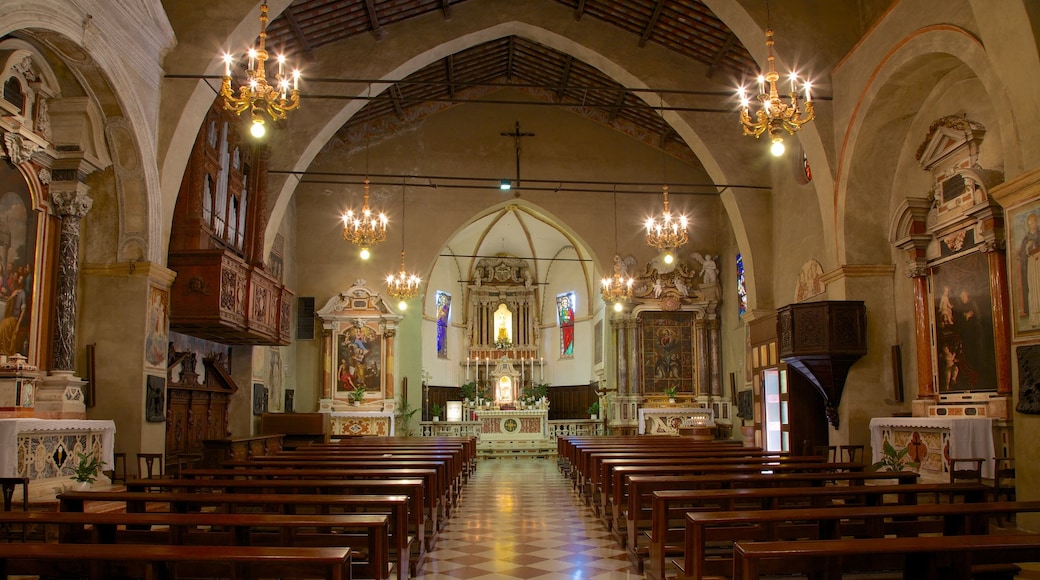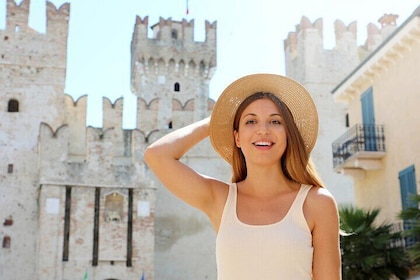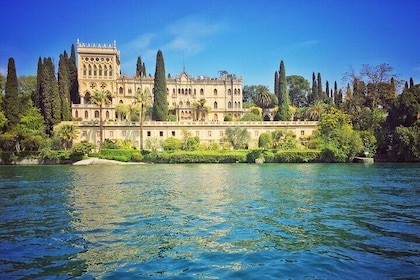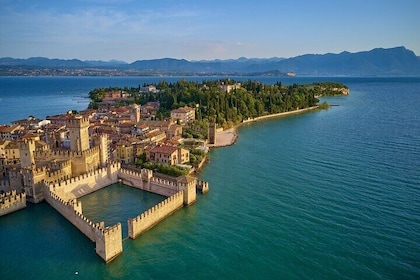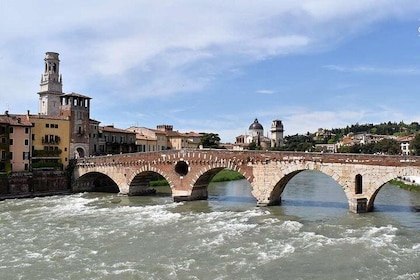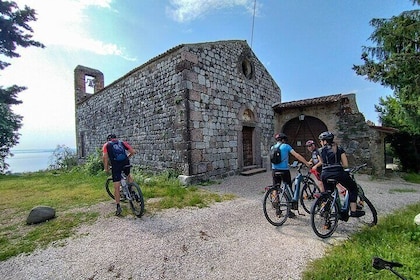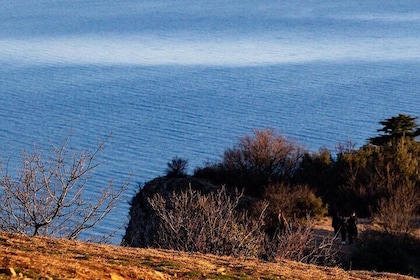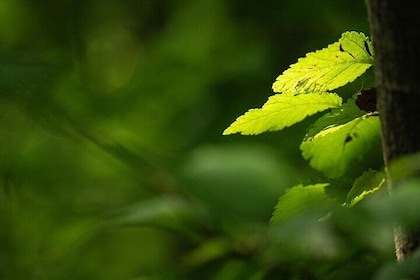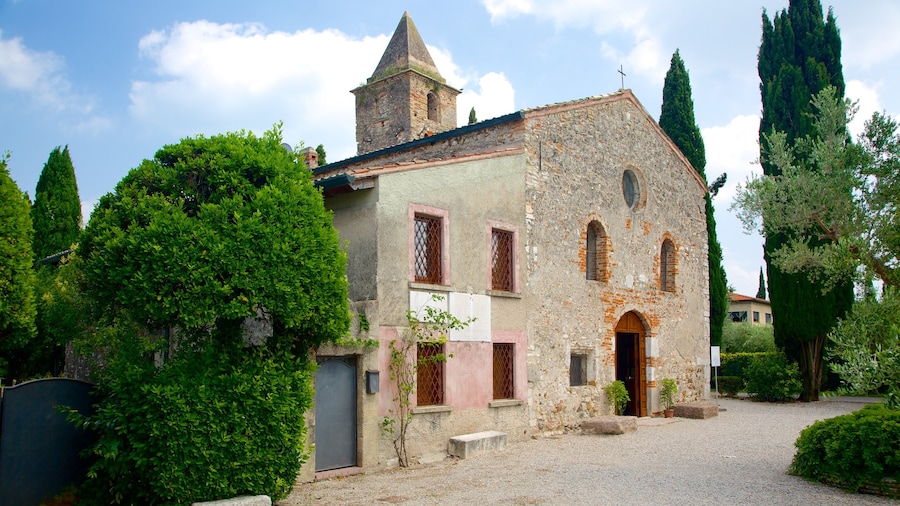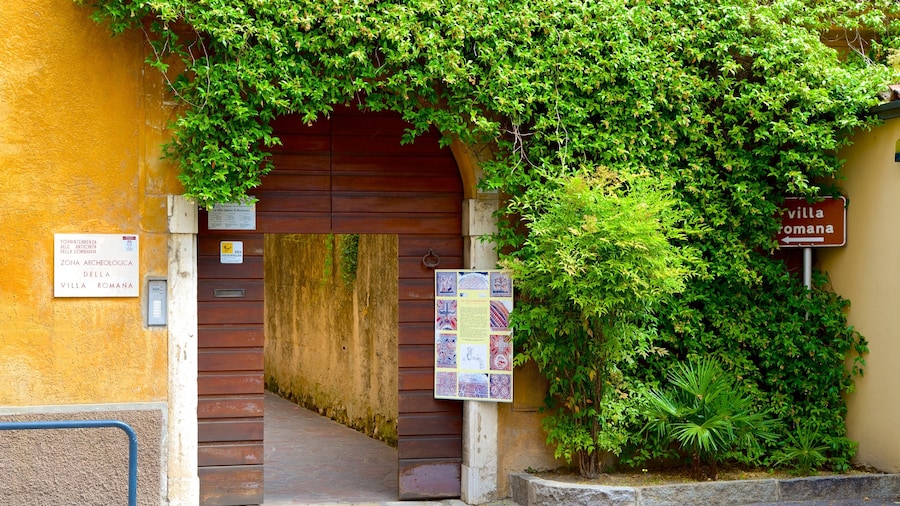Browse the collection of religious art inside the Church of Santa Maria Maggiore. This stone building from the 15th century is decorated with centuries-old frescoes and statues. It is Sirmione’s parish church.
Santa Maria Maggiore was built on the site of the former Church of St. Martin in the Castro, which was founded in the 8th century. Older material was reused in the construction of this ancient place of worship. Look at the columns of the five-arched portico. One of them is dedicated to the emperor Julian the Apostate who lived during the 4th century. The exterior of the building is also noteworthy for its terracotta decorations.
Tour the interior of this modest single-nave church for its collection of religious art. Study the wooden statue of a Madonna enthroned. Look at the 16th-century crucifix, which is attributed to the Italian painter Domenico Brusasorci.
View the old frescoes, many of which were painted in the 15th century. Among them is a depiction of St. Sebastian, his body pierced by many arrows. Go up to the polygonal apse for a closer look at the stained-glass windows.
Turn your gaze toward the statue of Saint Rocco or Roch, who lived in the 14th century. He is pointing to a gland on his leg that has been enlarged due to infection by the plague. The religious figure is the patron saint of plague victims.
Upon leaving the church, stroll through the churchyard to find another item of Roman providence, a memorial stone dedicated to the god Jupiter. Today it is used as a collection box for the poor.
The Church of Santa Maria Maggiore is located in the heart of the old town. Vehicle access to Sirmione is restricted, so park your car, for a fee, in the area south of the castle, which sits at the lakeside town’s entrance. Then walk across the drawbridge next to the castle to access Sirmione.
